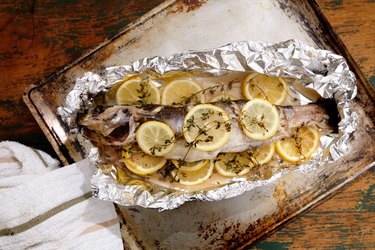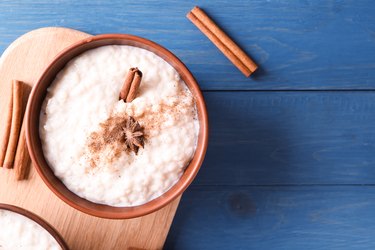The fact that you can play around with the chili recipe is one of the best things about making a big pot of chili. Unusual vegetables or turkey instead of beef? Your recipe is limited only by your imagination.
If you choose a vegetarian chili recipe or just want to make chili that is heavy on the beans, you need to make sure you prepare the beans the right way. If you choose dried beans, follow these steps to make sure they taste and feel the best.
Beans are a classic chili ingredient, providing protein fiber and texture. Many chili recipes call for canned beans which are quick and convenient. But when using dried beans is it necessary to soak them first before cooking up a pot of chili? While soaking is not absolutely required, it can benefit both the taste and digestibility of your homemade chili.
Why Soak Beans for Chili?
Soaking dried beans before cooking has several advantages:
-
Hydrates beans for even cooking – Beans absorb water during soaking, allowing them to cook more evenly Unsoaked beans may remain crunchy in the center.
-
Breaks down indigestible compounds – Soaking begins breaking down complex sugars like raffinose that can cause gas. This makes beans easier to digest.
-
Shortens cooking time – Pre-soaked beans take less time to become tender, cooking in 1-2 hours rather than 2-3.
-
Improves texture – Soaked beans hold their shape better during cooking rather than splitting or becoming mushy.
-
Enhances flavor – Soaking can help beans fully develop their flavor. The skins soften so they take on spices and seasonings better.
So while not completely necessary, soaking dried beans can maximize both the taste and digestion of your homemade chili.
How Long to Soak Beans for Chili
Most beans require an overnight soak of at least 8 hours. Lentils and split peas cook faster and only need a 2-4 hour soak.
There are three easy methods for soaking beans:
-
Overnight method: Place beans in a large pot and cover with 10 cups water per 1 pound beans. Let soak 8-12 hours or up to 24 hours.
-
Hot soak: Bring beans and 10 cups water per pound to a boil. Remove from heat, cover and soak 4 hours.
-
Quick soak: Bring beans and 10 cups water per pound to a boil. Remove from heat, cover and soak 1 hour.
Drain the soaked beans, rinse, and add to your chili recipe. Discard the soaking liquid which contains indigestible compounds.
Do You Have to Soak Beans for Chili?
While soaking is ideal, you can skip it in a pinch. With a few modifications, you can still achieve tender, flavorful beans:
-
Simmer longer: Unsoured beans may need 3-4 hours of gentle simmering to become tender. Check often and add more liquid if needed.
-
Use a pressure cooker: A pressure cooker can cut bean cook time in half or more, making unsoaked beans an option.
-
Bake beans: Baking beans low and slow helps break down their skins. Cover beans with water or broth and bake at 250°F for 2-3 hours.
-
Finish cooking in sauce: Partially cooking beans in water, then finishing in chili sauce helps them absorb flavor.
-
Use canned beans: Rinse and add canned beans toward the end of chili cooking so they don’t get mushy.
While beans won’t be quite as digestible without soaking, extra cooking time can still yield good results.
Tips for Cooking Soaked Beans
Once beans are soaked, follow these tips for cooking:
-
Drain and rinse beans – Discard soaking water which contains indigestible compounds. Rinse beans.
-
Use fresh water – Cook beans in new water, not soaking liquid. About 6 cups per pound.
-
Don’t add salt – Salt can toughen bean skins. Wait to add salt until beans are tender.
-
Simmer gently – Cook beans at a gentle boil or simmer to prevent bursting skins.
-
** Stir occasionally** – Prevent beans from sticking to pot. But avoid over-stirring which can cause them to break down.
-
Check doneness – Beans are done when very tender all the way through. Taste test.
Best Beans for Chili
The most common chili beans are:
-
Kidney beans – Large, reddish-brown beans that hold their shape well. Also called chili beans.
-
Pinto beans – Medium-sized pink speckled beans. Smooth texture.
-
Black beans – Small black beans that absorb flavors. Slightly sweet taste.
-
Navy beans – Small white beans that get very creamy when cooked.
-
Anasazi beans – Large white beans with a dense meaty texture. Good chili base.
-
Cranberry beans – Speckled cream-colored beans. Become very tender.
Bean mixtures like chili bean mix provide contrasting colors and textures. Feel free to experiment with heirloom bean varieties as well.
Making a Chili with Mixed Beans
A bean heavy vegetarian chili is a perfect opportunity to use a medley of beans. Try these tips:
-
Soak beans separately – Beans have different soaking times so soak varieties separately.
-
Start with firmer beans – Add firmer beans like kidneys first so all beans finish at the same time.
-
Prevent bursting – Add more delicate beans like cranberry later so they don’t overcook.
-
Season judiciously – Go easy on seasonings until you taste how bean flavors blend.
-
Simmer at end – Gently simmer mixed beans just until heated through and tender.
Playing with a combination of beans creates a chili with more complex flavor and texture.
So while not required, soaking beans before making chili allows them to cook evenly and develop their full flavor. But even unsoaked beans can be coaxed into tenderness with gentle, prolonged simmering and become a delicious base for chili.

Soaking the Beans for Chili
Mayo Clinic says that if youre working with dried beans, you need to start by picking through the beans to remove any shriveled or discolored beans, bits of dirt or any other unwanted particles you shouldnt be eating. Then do a good rinse of the beans.



After getting rid of all the bad parts and giving the beans a good rinse, you can start soaking them for your chili recipe. To make chili, it’s important to soak the beans first. The University of Nebraska-Lincoln Institute of Agriculture and Natural Resources says this lets the beans soak up water and break down the starches that would otherwise make you sick.
The U. S. Department of Agriculture offers three different ways to soak beans. You can do a hot soak, a quick soak or an overnight soak. Before you start, you want to select a pot thats large enough for the beans youre preparing.



It’s important to use a pot that’s much bigger than the dry beans you start with because they will triple in size. For every pound of dry beans, you will need 10 cups of water, which is about 2 and 1/4 cups.
To make a hot soak that will help get rid of gas, put the beans and water in a pot and boil them for two to three minutes. Remove from the stovetop and cover for four hours while the beans soak up the water.
To undertake a quick soak, follow the same steps, but let them sit for only one hour. The third option is an overnight soak, which requires no boiling on the stovetop. Instead, add the beans and water to a pot and let it sit for at least eight hours.
Drain and rinse the beans after they have finished soaking. You can now cook them. Put them back in the pot, cover them with fresh water, and let them simmer for about 30 minutes to two hours, or until they are soft.
Giving beans a pre-cooking soak is the traditional method of preparation, but you dont necessarily have to take that route. The U.S. Dry Bean Council recommends giving beans a quick rinse, then putting them in a pot and adding enough water to cover them.
Heat the water until it boils. Then lower the heat, cover the pot, and let the beans cook until they are soft. You may need to add more water while they simmer.
The Key to GREAT Homemade Chili (Most People Don’t Do It)
FAQ
What happens if you don’t pre soak beans?
Can you put uncooked beans in chili?
What happens if you don’t rinse beans before cooking?
